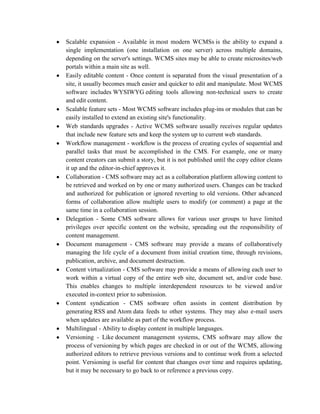A Decision Support System (DSS) is a computer-based system that helps organizational decision-making. It supports managers at different levels and helps make rapidly changing decisions. DSS can be fully computerized, fully human, or a combination. It helps compile useful information from various sources to identify and solve problems. An expert system is a computer system that emulates human expert decision making through knowledge-based reasoning. A content management system (CMS) allows centralized publishing, editing, and modifying of content from a main interface and provides workflow management in a collaborative environment.






